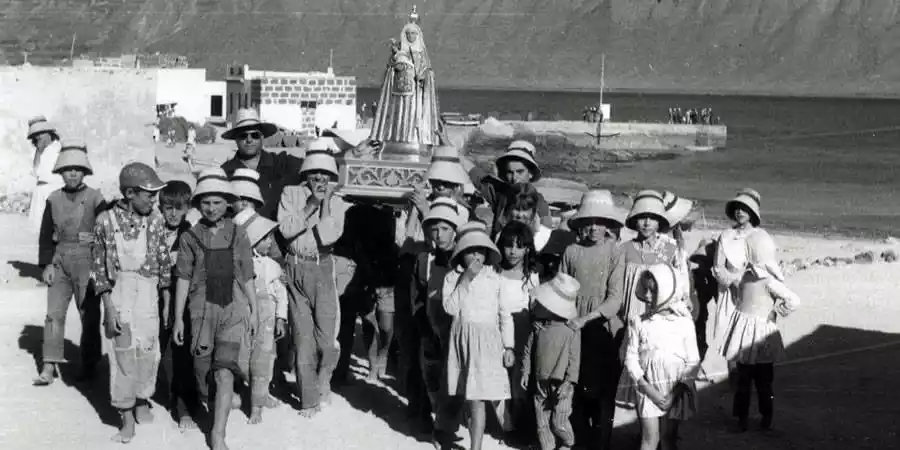
La Graciosa, beyond its paradisiacal beaches and natural beauty, harbors a valuable historical heritage that reflects its rich cultural heritage and its role in the history of the Canary Islands.
In the waters of the Chinijo Archipelago, there are important underwater archaeological sites that provide evidence of maritime traffic between Europe and Africa in antiquity. In particular, the beaches of La Cocina and Francesa in La Graciosa contain a significant collection of amphorae and other elements of Roman culture. Additionally, a notable number of archaeological pieces such as plates, jugs, basins, and bowls from the 16th to 18th centuries have been found in the area’s waters.
On land, the presence of tumulus structures, habitation sites, and economic constructions also forms part of the archaeological heritage of the Chinijo Archipelago. In La Graciosa, for example, there is a set of circular and ellipsoidal tumulus structures along the coast.
Lastly, the deposits of marine fossils near the coast are also an important paleontological heritage of the area. Fossil remains of large birds found near Orzola are over 6 million years old and belong to a group of extinct flying birds, the Odontopterygiformes, which provide information about the origin and evolution of the fauna of the Canary Islands.
The ethnographic cultural heritage of the area includes a variety of elements, such as salt pans, hydraulic constructions, fishing-related structures, traditional farming systems, housing, and pathways. These elements reflect how the inhabitants of the area have adapted to a territory that is often hostile.
Church of Our Lady of Carmen. This church, located in Caleta de Sebo, is an emblematic monument of La Graciosa. Built in honor of Our Lady of Carmen, the patroness of the island, this church is a prominent example of traditional Canarian religious architecture.
The Salinas de Gusa, although located at the foot of the Risco de Famara in Lanzarote, are related to La Graciosa due to better access from this island and because they were used by the locals. These are the oldest salt pans in the Canary Islands, dating back to the second half of the 15th century. They transform and utilize a natural salt flat, situated below the maximum tidal level, where tidal water mixes with runoff water from the Risco.
The Salinas de Gusa belong to an ancient model of mud salt pans that required a specific location to become inundated with water during certain periods, allowing the salt to crystallize. The stone masonry surrounding them, which regulates water access, forms a network that creates a unique and colorful landscape of salt crystals. In addition to being a cultural heritage site, the Salinas de Gusa contribute to the maintenance of natural heritage, as they support the existence of microscopic algae, typical edge vegetation of salinas, and birdlife that rests and feeds in the salt pans. The Salinas de El Río, which are now abandoned, survive without human intervention due to the constant action of the tides and are a protected area of the Natural Park of the Chinijo Archipelago due to their high landscape and ecological value.
Regarding hydraulic constructions, there are numerous cisterns, “alcojidas,” and “maretas” in the area. The cisterns, which are often associated with housing, are structures made of dry stone masonry and covered by a vault, also made of stone, lined internally with lime mortar. They are an essential element of the infrastructure of Graciosa homes. The “alcojidas” are small fenced areas of land with dry stone walls, impermeable to contain water like a small dam. In the center of La Graciosa, “maretas” are common; these are hydraulic structures similar to small ponds designed to channel runoff for crop irrigation.
As for traditional farming systems, in La Graciosa, in the area of Llano de La Mareta, samples of artificial sandbeds can be found. These were used to counteract drought, covering the land to be cultivated with a layer of volcanic ash that favored the rapid infiltration of dew collected overnight, with minimal evaporation, exercising a thermoregulatory action throughout the day and promoting agricultural activities such as sowing and harvesting. The terraced walls made of dry stone...
